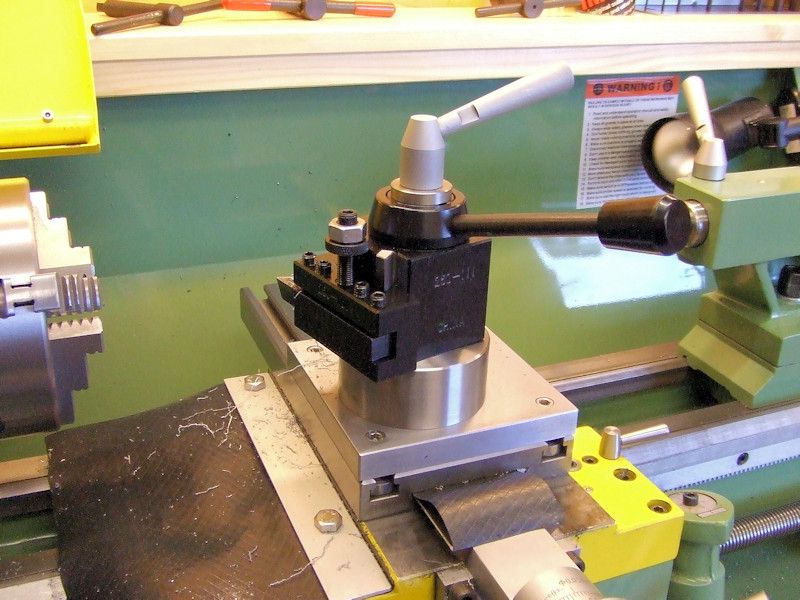Posted by Jim Smith 8 on 13/04/2021 00:32:31:
…
Sorry if I confused on X,Y Z. In maths, X is horizontal, Y is vertical and Z up and down but then that's on a piece of paper.. Something else to learn! So what I initially mean't which you all understood, is my DRO scale is on Z but when the tool holder is set parallel, it has fine control in the Z axis along the ways, which isn't measured.
On another point, I have a quick change tool post that takes up to 16mm sq. tools and I just got some cheaper 12mm HST tools to practice with, since I don't want to ruin tipped tools. The height setting screw on the post seems to foul on the Warco flip down guard if I take a tool close to the chuck but is still a safe distance away. I'll post a photo later to show this.
I've also read the beginners first mistake with no saddle stops! Manually I can be very careful, but its what can go wrong if power feed is used that would worry me. I shall leave that alone at the moment.
Having been taught 'Y to the sky' when drawing graphs at school, I find X,Y and Z so confusing when applied to machine tools, I avoid them. Clearer to name the movement, as in NDIY's "long travel" and "cross-travel".
Although Hopper describes the chuck guard as a 'nanny-state overkill' I've put mine back on. This after a ball of swarf caught in the chuck jaws and was flung into my face with enough force to draw blood. A little higher and it would have hit my eye. It may be possible to adjust the guard on the switch axle to avoid the adjuster. Might be possible to move the microswitch :inside the headstock too: I can't remember.
Power feed isn't that scary provided the operator is on the ball. Before taking any cut, manual or powered, it's good practice to check the movement won't foul anything before starting the lathe. Obviously running the carriage into the chuck at high-speed is bad news, but so is a cutter or the tool-post hitting a jaw.
Under power, I note a point just before end of cut and disengage drive as soon as the cutter reaches it. Not difficult because power traverse is fairly slow and it disconnects quickly. Then finish off manually. Long traverse is more likely to end in a crash than cross-traverse. The adjustable stop on the bed is convenient. Best not to bump into it, but provided not overtightened it will slide, which might wake the operator up!
Operators soon learn to pay close attention to what they are doing: it's necessary to achieve good finish and accurate dimensions. The main risk is doing something stupid while concentrating on the cut – head too close to the work for a better view risks a scalping, fingers caught by the jaws etc. Distractions are bad too. Accidents happen disproportionally to Learner Drivers and old-hands. Learners because they don't see the danger and old-hands because they become gung-ho. Good news, Model Engineering is pretty safe – serious accidents are almost unknown. In comparison woodworking is a bloodbath!
Putting DRO on my milling machine transformed it. The benefit on a lathe is less obvious and I've not bothered to put it on my WM280 – yet. Perhaps the best reason for a lathe DRO is mixed metric/imperial working, and I'm almost 100% metric. But even then, I use a caliper or micrometer to turn to a diameter, and stops or visual reference points to control cuts: the dials are used to get close, not to provide absolute accuracy. As always much depends on what the lathe is used for. What works for me may not be good for others.
Great fun learning! Enjoy.
Dave
Nigel Graham 2.









